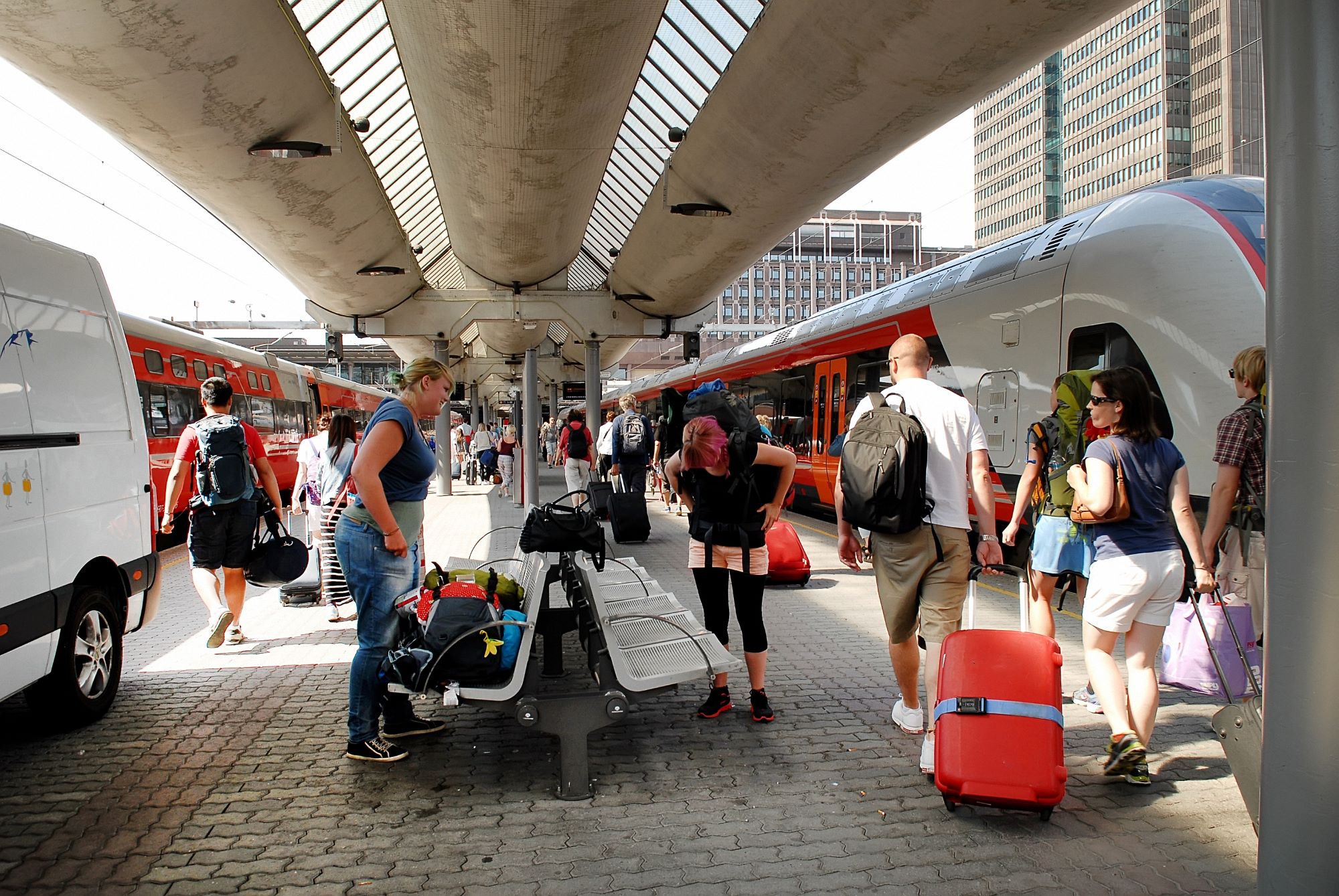
Cities are home to more than half the world’s population: 4.4 billion people commuting, working, eating, shopping, and using light, heat and air conditioning. As a result, cities collectively produce over 70% of the greenhouse gas (GHG) emissions warming the planet. They are also on the frontlines of the climate crisis, experiencing the increasingly devastating effects of storms, floods, extreme heat and wildfires firsthand.
Local and regional governments will play a central role in delivering solutions that can correct the world’s climate trajectory — from electrifying public transport to reimagining parks and green spaces. Research shows that cities could cut their emissions 90% by 2050 using measures that are already available. But doing so isn’t easy or cheap. Indeed, two-thirds of this potential hinges on supportive policy and regulation at the national and regional levels.
National climate plans have often overlooked opportunities for action at the city, state and regional levels in the past. That’s beginning to change as cities rise to a more prominent spot on the global climate agenda. Now, the question is how national governments will redesign their new climate strategies under the Paris Agreement, due in 2025, to help city and local governments meet their full potential.
Some countries are already proving how stronger collaboration between levels of government can unlock powerful results for the planet. From India to Kenya, Chile and beyond, these leaders show how multilevel partnership can drive climate action and ambition at the scale needed.
Delivering 50,000 Electric Buses in India by 2030
In India, buses are an essential mode of transportation, accounting for 75% of all public transport trips and serving over 70 million people every day. But with only one bus per 1,000 people, the current fleet falls short of what India’s booming urban population needs. And most of the buses operating today are powered by polluting, planet-warming diesel.
Electric buses (e-buses) offer a two-fold solution: A way to expand public transit access while also reducing air pollution and emissions. Clean transport is a priority for the national government’s strategy to reach net-zero emissions by 2070. The challenge is that buses are bought and operated at the local level — and many cities have struggled to make the shift to electric due to high costs (2-3 times more than diesel buses) and complicated procurement processes. Bus operators and manufacturers have also hesitated to invest due to high production costs.
India’s “Grand Challenge” initiative sought to tackle these roadblocks and unlock local e-bus deployment through top-down support. It united five large cities, combining their demand under a single procurement contract, to help secure uniform pricing and streamlined specifications. Meanwhile, the national Ministry of Heavy Industries provided critical financial support through an electric vehicle subsidy program.

This combination of national support, demand pooling and standardized contracts effectively minimized both financial risks and overall costs. Cities participating in the initiative have seen the lowest e-bus prices in India to date, with costs falling 30% below diesel and natural gas buses. Manufacturers were able to scale up production thanks to guaranteed volumes and payment security mechanisms. By lowering operational and financial hurdles, the initiative has encouraged private sector investment and allowed cities to focus on deploying e-buses rather than navigating complex procurement processes.
This success has had a ripple effect nationwide. The Grand Challenge led to the formation of the National Electric Bus Program (NEBP), which aims to procure 50,000 electric buses across hundreds of Indian cities by 2030.
Financing Electric Two- and Three-Wheelers in Kenya
Electric mobility is also top of mind Kenya, where the transport sector is the third-biggest source of GHG emissions. The country’s National Climate Change Action Plan identifies transport as a priority area for intervention — and it’s especially focused on electrifying the two- and three-wheelers that provide 22 million motorcycle taxi rides every day.
To this end, Kenya’s Ministry of Roads and Transport and Ministry of Environment are collaborating with local and regional governments on the Small Vehicles E-Mobility project. Through the initiative, the national government will mobilize US$7.9 million in subsidies to make e-vehicles more affordable in rural areas and city outskirts, which account for over 70% of the country’s population.
Most of this funding will be channeled through a first-loss credit guarantee fund, worth US$7.1 million, that is designed to take on the initial financial risks if new investments don’t perform as expected. This should ultimately make investments in e-vehicle manufacturing and assembly less risky and more attractive to private investors.
Subnational governments play an essential role in helping localize these solutions by supporting infrastructure (like charging stations) and local manufacturing opportunities. This collaborative approach addresses both the demand and supply sides of e-mobility, ensuring that the shift towards electric vehicles is sustainable and economically viable.
Mainstreaming Climate Action in Chile
Chile is seen as a leader in the climate action sphere. Its robust climate strategy covers almost every emissions source to reach net zero by 2050. In 2021, the country developed its first sectoral carbon budgets; these mandated emissions reductions in sectors like energy, mobility and land use, assigning the work to specific agencies and holding sectors accountable through budgetary sanctions.

But Chile went a step further when it enacted the Climate Change Framework Law in 2022. The law overhauled the way climate action is implemented in the country, shifting the sole burden away from the Ministry of Environment and spreading it between 17 different ministries. Chile has also empowered its local governments, including cities and regions, to develop and implement local climate policies. This streamlined decision-making has led to a boom in climate policy work throughout the country, shortening timelines for policy development and giving the agencies tasked with achieving net zero more autonomy to reach their goals.
Notably, Chile’s climate law included procedural regulations that could lay the foundation for an emissions trading scheme. And the country has created new councils and committees to support policy development, accountability and public engagement, helping ensure that climate initiatives have the continuity and support they need to make a lasting impact.
How National Governments Can Unlock Local Climate Action
2025 will be a pivotal moment for countries to deliver ambitious new national climate commitments (known as Nationally Determined Contributions, or NDCs) that elevate local and regional governments as partners in climate action. But crafting these plans is just the first step; it will take much stronger policy, finance and collaboration to actually deliver them.
Looking ahead, governments should strive to deliver three key outcomes that will help enable action and ambition at the scale needed:
1) Enhance coordination at all levels
Following leaders like India, Kenya and Chile, all countries should work to strengthen collaboration among levels of government. This can include creating a shared vision through national development or climate change plans, evaluating synergies or trade-offs between the objectives of various government levels, and integrating local data into national GHG inventories.
Rwanda, for example, leveraged its Environment and Natural Resources Sector Working Group — which includes representatives from the environment, resources, forestry and agriculture ministries, as well as development actors in the private, public and research sectors — to verify data and monitor and evaluate results on NDC implementation. In its 2020 NDC update, Rwanda itemized every mitigation and adaptation measure as well as the entity (such as the ministry or sector) responsible for implementation to enhance accountability and follow-through.
2) Finance resilient and collaborative climate pathways
National and subnational governments alike must collaborate with financial providers to sustainably fund climate action and address barriers to accessing finance. On the demand side, governments can work with partners in the real economy — such as NGOs, start-ups and public service providers — to reduce risks and incentivize climate action without increasing public debt. They should also address traditional and climate-specific investment barriers, such as a preference towards short-term profitability, a reliance on voluntary commitments, or insufficient data on climate risks to financial performance and portfolios. On the supply side, financial providers like private investors or development banks should align their models and decision-making with national and local climate plans.
As part of Norway’s 2020 NDC update, the country introduced new measures to help coordinate NDC implementation across sectors and improve cities’ access to climate finance. Through a nationwide carbon pricing scheme, Norway was able to substantially increase funding to build and maintain railways, providing EUR 31.8 billion (US$34.3 billion) in 2022 alone. This has improved passenger and freight transport across nine of the country’s largest metro areas.

3) Strengthen local implementation capacity through partnerships and resources
National climate commitments can often be difficult to translate into relevant actions at local or regional levels. While subnational governments are uniquely placed to catalyze climate action across specific sectors (like transport) and convene local stakeholders, many face resource constraints. Capacity, especially staff capacity, remains a critical barrier. National governments can offer resources, technical assistance and stakeholder partnerships to help overcome these hurdles and empower local leaders to set and pursue ambitious climate targets.
South Africa developed a unique Local Government Climate Change Support Program, which fosters collaboration between different levels of government through peer exchange and vertical dialogue. The program is designed to integrate climate change into local development plans and support municipalities in developing and funding climate projects. In this way, South Africa can catalyze climate action through intergovernmental relationships.
Climate Solutions Need All Hands on Deck
All levels of government have a critical role to play in the transition to a net-zero, climate-resilient future. Local and regional governments will be pivotal in delivering solutions that can correct the world’s dangerous climate trajectory. Through multilevel partnerships, national governments can significantly enhance the ambition, credibility and long-term implementation of climate commitments and actions — starting with their 2025 NDCs.
What Is CHAMP?
The Coalition for High Ambition Multilevel Partnerships (CHAMP) for Climate Action was launched at the 2023 UN climate summit (COP28). It aims to help national governments enhance cooperation with subnational governments in the planning, financing, implementation and monitoring of climate strategies for the collective pursuit of climate change mitigation, adaptation and resilience. CHAMP emerged in response to a critical gap in climate target implementation and is supporting national-subnational collaborations. Learn more about CHAMP here.
This blog originally appeared on WRI’s Insights.
Michael Doust is Director of Urban Efficiency & Climate for WRI Ross Center for Sustainable Cities.
Pandora Batra is Strategic Engagement Manager for WRI’s Climate program and WRI Ross Center for Sustainable Cities.
Sophia Sanniti is a Research Associate for WRI’s Faith and Sustainability initiative.
Chaandi Malhotra is Integrated Climate Action Program Coordinator for WRI Ross Center for Sustainable Cities.





